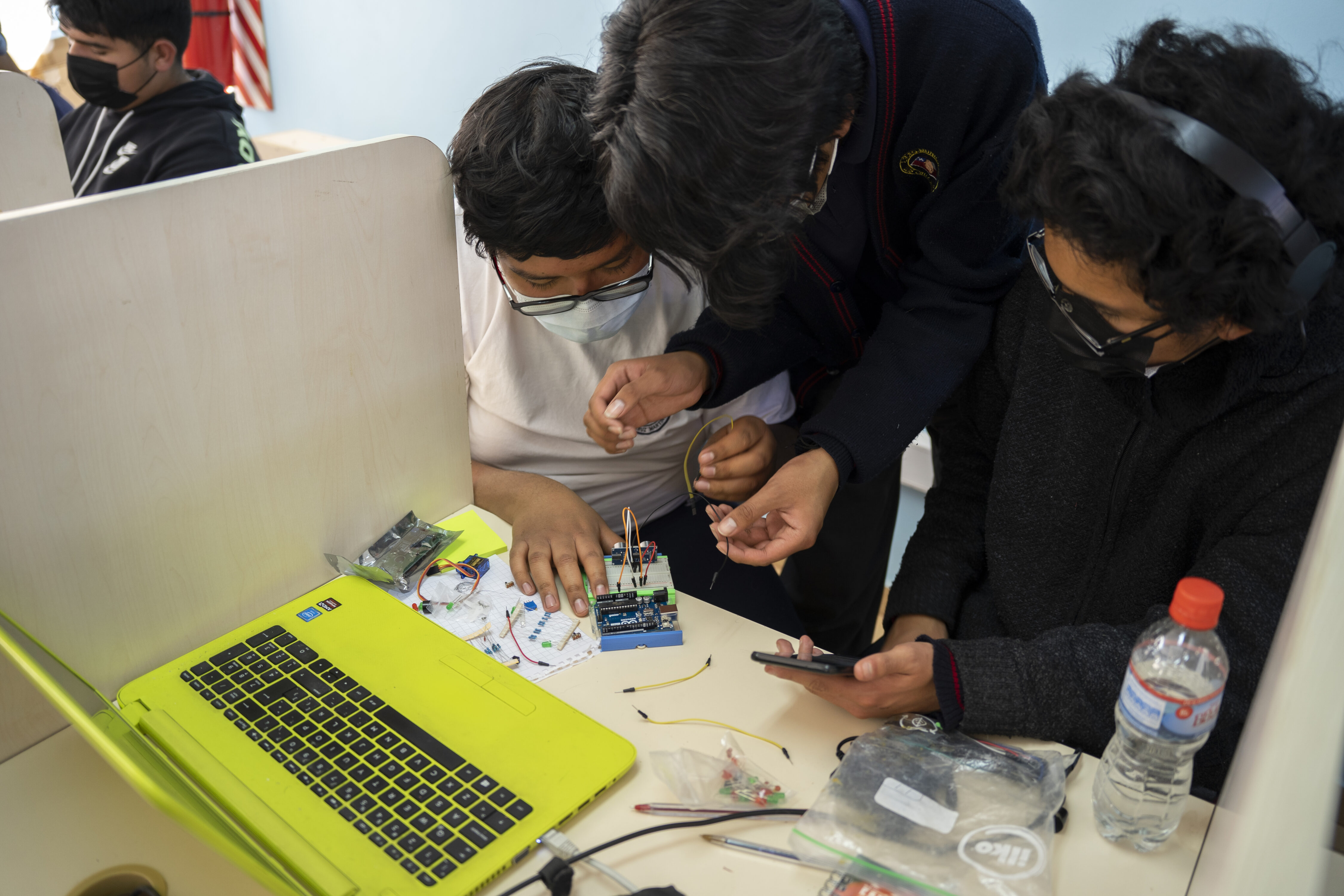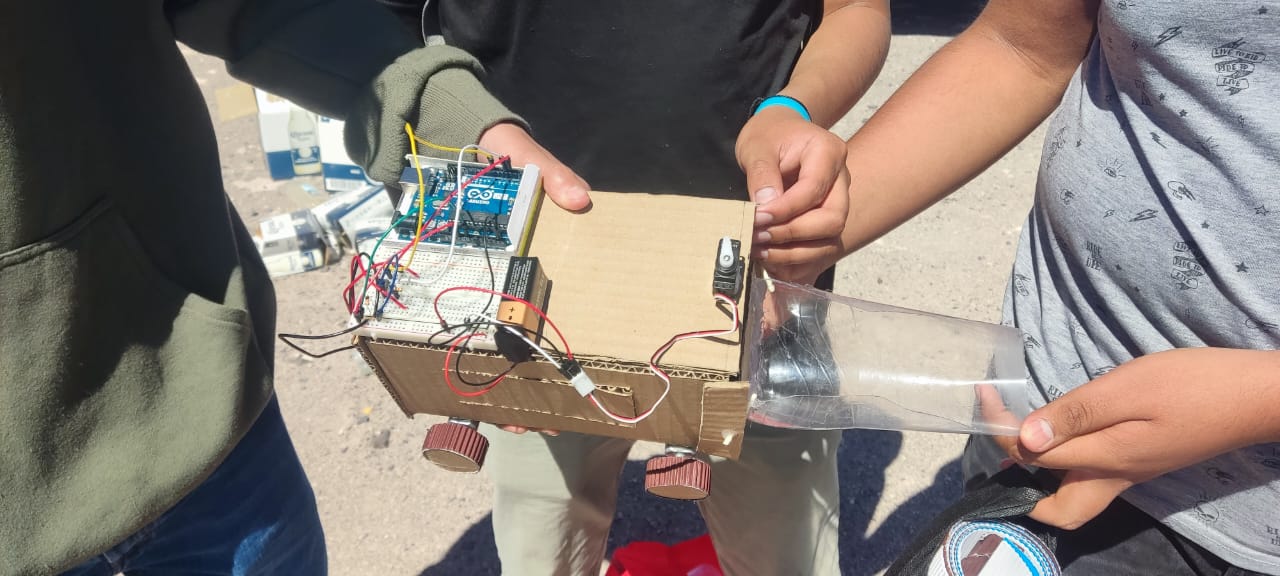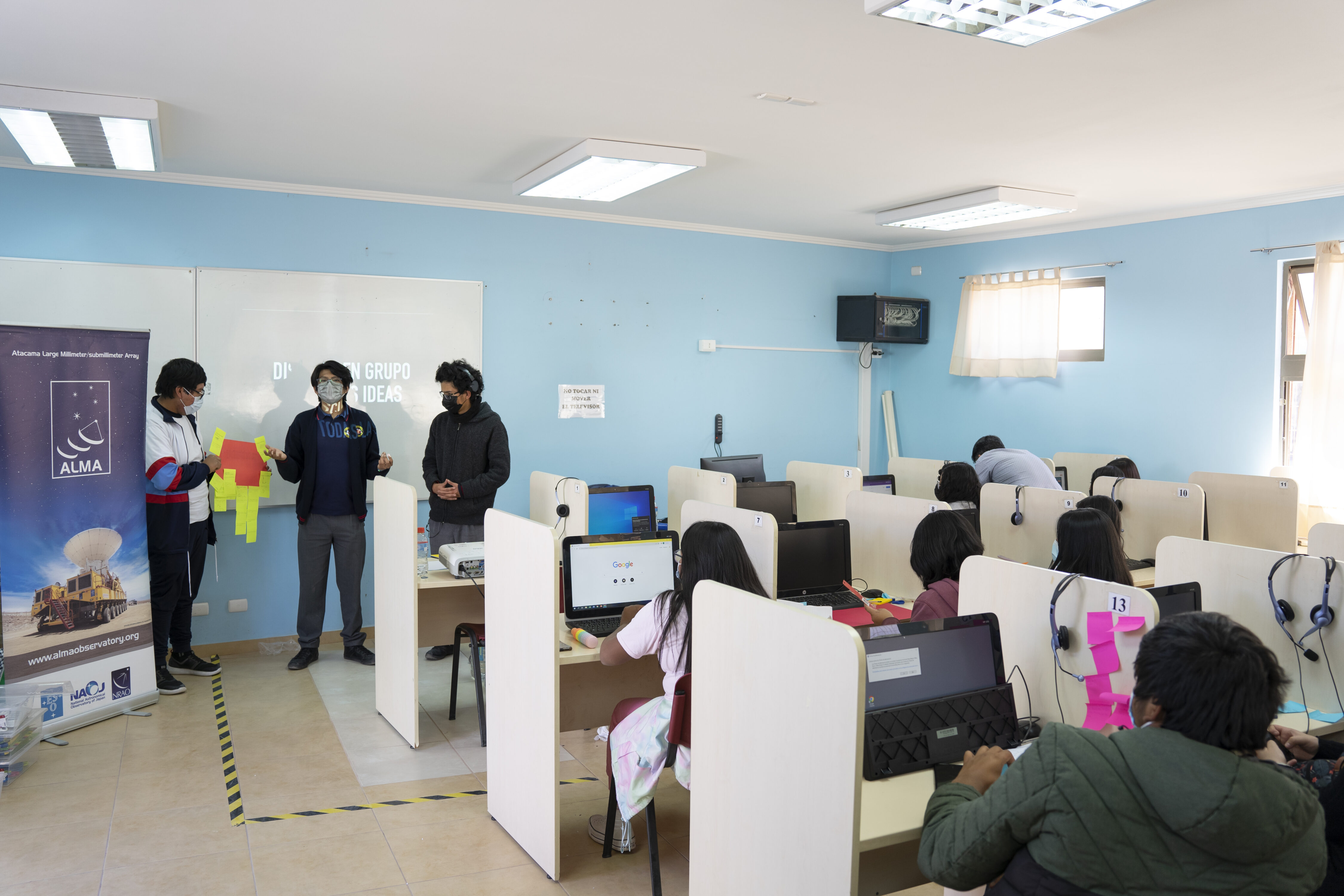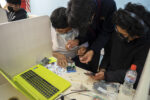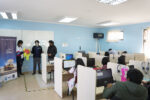Atacama Makers: innovating from the schools of the desert
For the third consecutive year, the ALMA astronomical observatory is implementing the "Atacama Makers" workshop that seeks to promote creative thinking, innovation and entrepreneurship hand in hand with technology among its student neighbors from Toconao, San Pedro de Atacama and Calama.
"Atacama Makers seeks to transfer early-stage innovation and entrepreneurship skills to boys and girls in the region," says Paulo Cisternas, one of the HUMM workshop leaders in charge of the program.
“They brought an Arduino and we were able to program. And that, for all of us who live here in the most remote locations, is new,” says Mateo Ramos, a student at the Likan Antai Agricultural High School in San Pedro de Atacama.
Through six modules with interactive technological experiences, students foster their critical thinking, identify problems or opportunities in their environment, and create solutions based on Arduino technology.
“Little by little we made progress until we managed to achieve something. The same feeling of having failed and then doing well, and failing again gives a sense of progress”, says Dylan Belen, a student at the Luis Cruz Martínez High School in Calama. Also from this city is the América B10 High School that participates as well in the project. Both educational institutions enter the program thanks to the management of the “Youth Group Innovating for Science” foundation.
The teacher of the Toconao Educational Complex, Cristian Álvarez, sees a change among his students: "They are more methodical, more systematic, more aware of the stages and procedures, which is helping their own development." That is precisely the objective of the ALMA observatory when implementing this educational project that unites technology and innovation. “They live between the ancestral and the modern, so it is logical to have come closer to be able to support them and share all”, concludes Danilo Vidal in charge of community relations at the observatory.
Additional Information
ALMA is a partnership of ESO (representing its member states), NSF (USA) and NINS (Japan), together with NRC (Canada), NSTC and ASIAA (Taiwan), and KASI (Republic of Korea), in cooperation with the Republic of Chile. The Joint ALMA Observatory is operated by ESO, AUI/NRAO and NAOJ.
Video
Images
